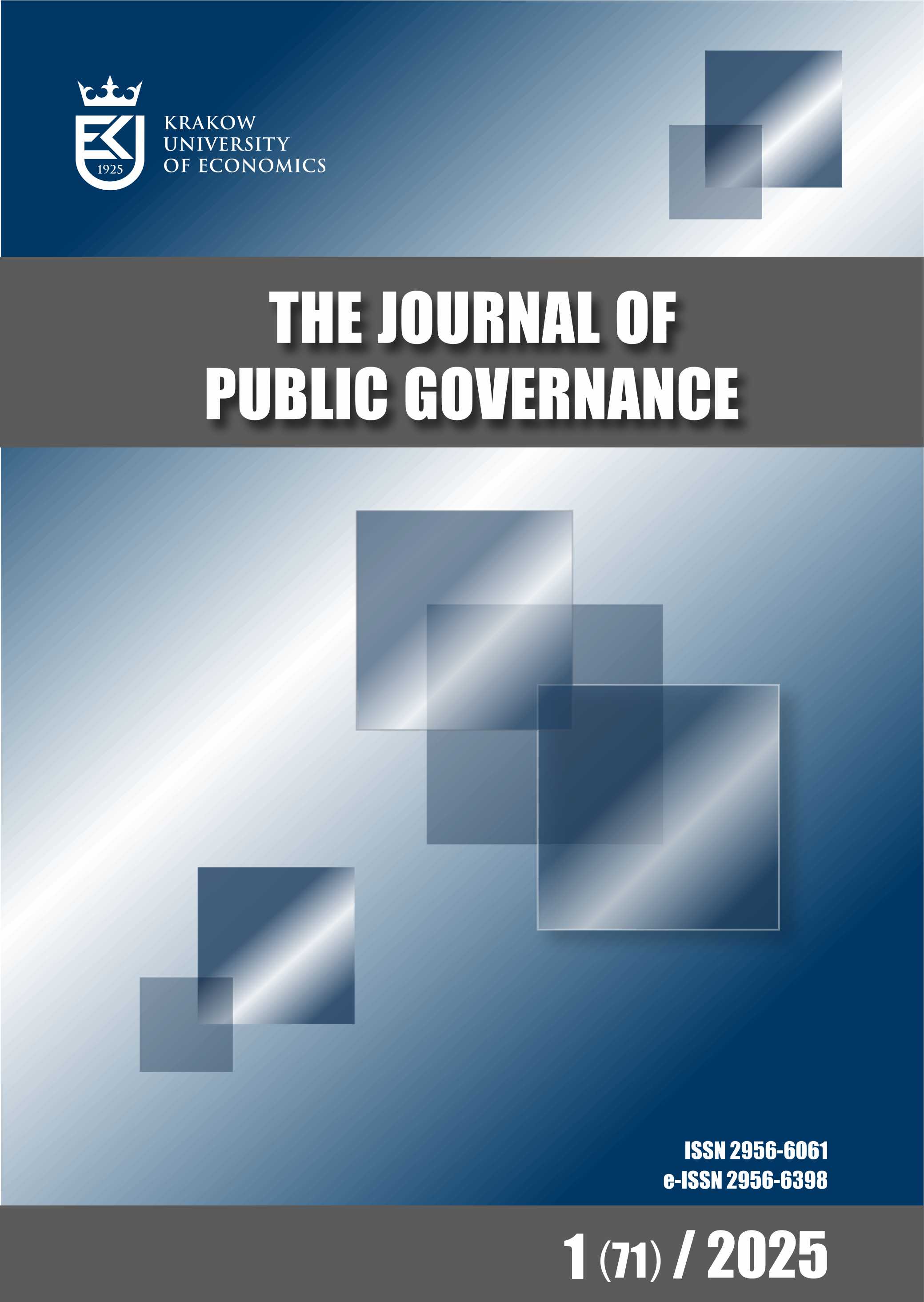Some Remarks on the Report “Science and Higher Education vs. GDP” Prepared at the Initiative of the Conference of Rectors of Polish Economic Universities: An Analysis of the Convergence Processes in Selected Central and Eastern European Countries
DOI:
https://doi.org/10.15678/PG.2022.61.3.05Keywords:
R&D expenditures, government expenditures on science, convergence processes, SUREAbstract
Objectives: This paper summarises the findings of a report by Acedański et al. (2023) that focuses on the relationship between science and economic growth. The report was commissioned by the Conference of Rectors of Economic Universities (KRUE) and prepared by researchers from five public economic universities in Poland. The authors of the report and the KRUE aim to share their message with a wide audience that includes policymakers, academic experts, and students. Additionally, the article analyses the impact of research and higher education spending on convergence processes in Central and Eastern European countries.
Research Design & Methods: The study examined different indicators, including government expenditure on basic research, higher education, and research and development. We utilised SURE models and observed that there was notable diversity in the convergence processes among the analysed countries. Additionally, we found a correlation between research spending and the rate of catching up. However, it is important to note that this relationship is not universal and varies across countries, even those within the same region.
Findings: Acedański et al. (2023) report quantifies the relationship between science, higher education, GDP, and economic development in Poland. The report states that science and higher education sectors positively impact local economies, and individuals with higher education contribute the most to human capital resources in the economy, leading to GDP growth. However, Poland has a funding gap in research and science compared to highly developed countries as well as many Central and Eastern European countries. The report suggests that investment in a country’s education and higher education system is essential for generating developmental impulses and supporting its economy.
Implications / Recommendations: The impact of scientific activity depends heavily on funding, especially through higher education institutions. In Poland, the salaries of academic teachers have decreased compared to other professions, and their position in the wage distribution is the worst it has been in the past two decades. Investing in a country’s education and higher education system is essential to support the economy. Acedański et al. (2023) suggest that a 0.1 percentage point increase in research and development expenditure, as a percentage of GDP, can lead to a 0.8 to 1.3 percentage point increase in GDP growth. However, the conclusion was based on panel data from EU countries, and the impact of scientific research on GDP may differ when analysing Central and Eastern European (CEE) countries. In this paper, we also present an extended analysis of the impact of science and education on economic growth through the lens of convergence processes. We show that the relationship above is not straightforward and represents substantial variability across countries, even those of the same region.
Contribution / Value Added: Firstly, the report by Acedański et al. (2023) emphasises the importance of the science and higher education sector for economic growth. Their empirical research helps quantify the relationship between science, higher education, GDP, and economic development, offering a deeper understanding of this connection. The report complements previously published analyses and research on the topic. Secondly, our regional research shows that the convergence processes vary greatly among the analysed countries. The inclusion of spending on science, research, or higher education in the convergence equations has a varied impact on the assessment of the pace of the catching-up processes in the CEE region.
Downloads
References
Acedański, J., Pietrucha, J., Bem, A., Chłoń-Domińczak, A., Kośny, M., Pipień, M., Ratajczak, M., & Zwierzchowski, J. (2023). Nauka i szkolnictwo wyższe a PKB. Raport przygotowany z inicjatywy Konferencji Rektorów Uczelni Ekonomicznych. Wydawnictwo Uniwersytetu Ekonomicznego w Katowicach.
Adamczyk, P., & Pipień, M. (2022). On the Role of Portfolio Indicators of the Capital Flows in the Convergence Processes: An Application of Systems of Regression Equations in the Case of Selected CEE Countries. Central European Journal of Economic Modelling and Econometrics, 14, 303–333.
Barro, R. J., & Sala-i-Martin, X. (1992). Convergence. Journal of Political Economy, 100(2), 223–251.
Jarco, D., & Pipień, M. (2020). Investigating the heterogeneity of economic convergence in Latin American countries: An econometric analysis of systems of regression equations. Latin American Economic Review, 29(6), 1–17.
Mankiw, N. G., Romer, D., & Weil, D. N. (1992). A contribution to the empirics of economic growth. The Quarterly Journal of Economics, 107(2), 407–437.
Pipień, M., & Roszkowska, S. (2019). The heterogeneity of convergence in transition countries. Post-Communist Economies, 31(1), 75–105.
Sala-i-Martin, X. (1997). I just ran two million regressions. American Economic Review, 87, 178–183.
Solow, R. M. 1956. A contribution to the theory of economic growth. The Quarterly Journal of Economics, 70(1), 65–94.
Zellner, A. (1962). An efficient method of estimating seemingly unrelated regressions and tests for aggregation bias. Journal of the American Statistical Association, 57(298), 348–368.
Downloads
Published
Issue
Section
License
Copyright (c) 2022 Journal of Public Governance

This work is licensed under a Creative Commons Attribution 4.0 International License.



